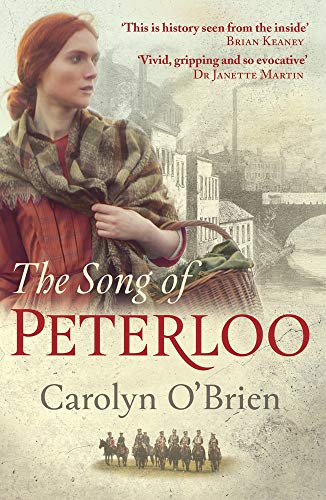The Song of Peterloo
Despite the cover image, this novel is not a traditional “clogs and shawls” novel.
It is 1818. Times are hard for the low-paid cotton-mill workers in Manchester. Like many industrial towns of the early 19th century, they had no representation in Parliament.
Nancy Kay is the sole wage-owner for herself, her ailing elderly mother and her son Walter. Walter is thought to be “soft in the head” and babyish, who would today be classed towards the higher end of the autistic spectrum. Nancy works in the noisy, dirty and dangerous spinning room of Wright’s Mill. She wishes she could read and write, but without money and time, this is only a dream. After the death of his uncle, Samson Wright, not brought up to be a wealthy industrialist, preferring his books and especially his piano, inherits Wright’s cotton-mill in Manchester and so life changes for both him and Nancy.
In the spring and summer of 1819, small meetings take place throughout Lancashire where advocates of parliamentary reform and workers’ rights tell the workers how the powers-that-be ignored them. In fact they didn’t ignore them, but were determined to arrest and imprison them. The inspired workers assemble in St Peter’s Field in Manchester on 16th August to hear the well-known orator, Henry Hunt. Of course, the Prime Minister and his government get wind of this and send hundreds of soldiers and special constables. The carnage that ensues is thenceforth known as “The Peterloo Massacre”, as it came only four years after the Battle of Waterloo.
Carolyn O’Brien’s novel is a compelling account of this fateful day in British political history. The facts are accurate; the characterisation sharply focused. It tells a love story, but not in a sentimental way, and nor is it depressing. Highly recommended.










